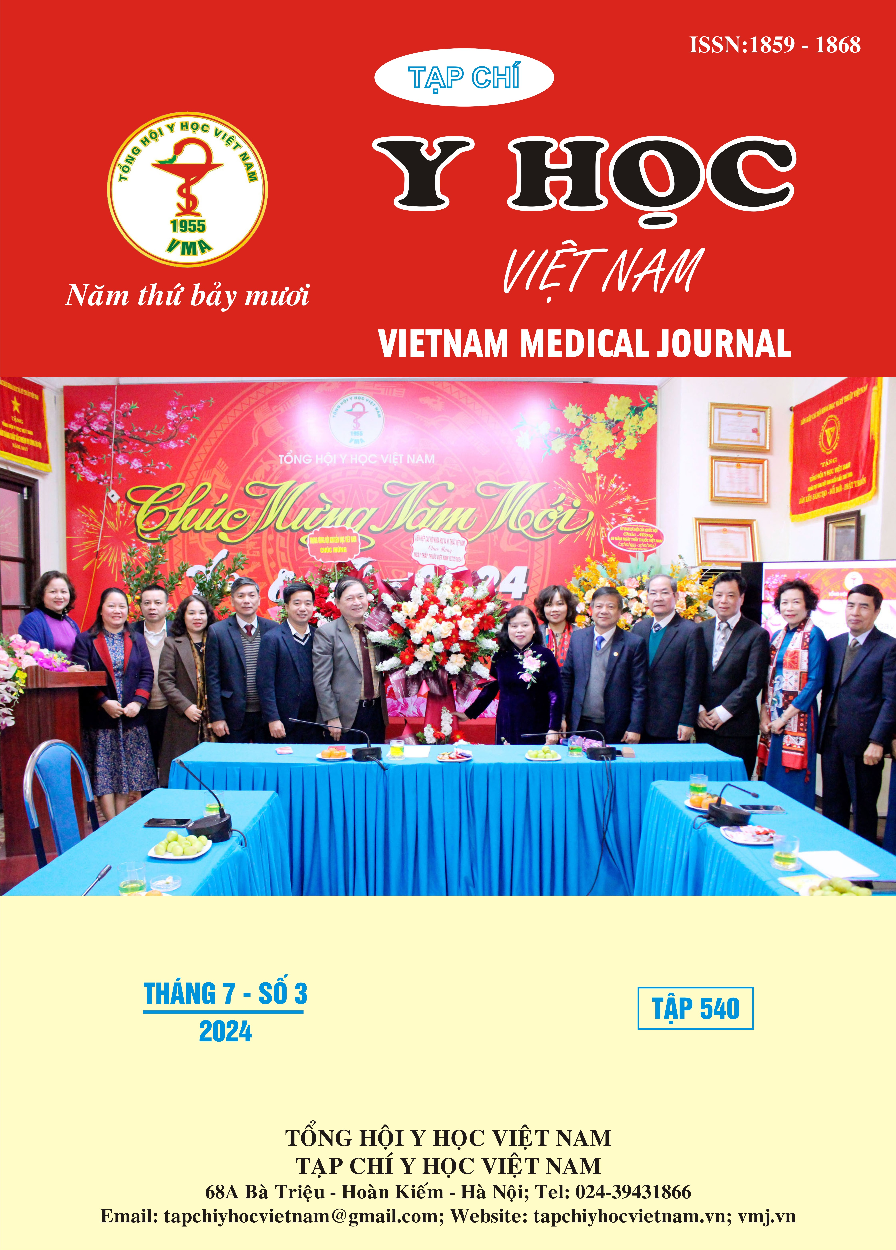IDENTIFYING THE COMPENSATORY HYPERTROPHY OF THE INFERIOR TURBINATE BY USING CT SCAN BEFORE DOING SURGERY AND THE ORIENTATION IN SELECTING SURGERY METHODS OF NASAL SEPTAL DEVIATION
Main Article Content
Abstract
Results of examining the compensatory hypertrophy of the inferior turbinate structure by preoperative computed tomography and guidance in choosing surgical methods in patients with deviated nasal septum. Objective: to investigate the structural changes of the inferior turbinate when there is compensory hypertrophy related to the opposite side of the nasal septum deviation. Subjects and methods: This study was conducted on 64 patients including 34 men and 30 women, providing information about the anatomical structure of the inferior turbinate including turbinate bone structure, mucosal thickness of the nasal turbinates on all sides based on computed tomography at Can Tho University of Medicine and Pharmacy hospital in 2023. Results: The average age in the study was 46.2±12 years old, the width of the inferior turbinates was recorded. as follows: in the anterior part it is 5.76 mm for the control group and correspondingly 10.05 mm in the compensatory hypertrophy group, in the middle and posterior part the corresponding results of the 02 groups are 5.68 mm compared to 10.1 and 5.60 compared to 10.01 mm. Conclusion: A survey of 64 cases shows that evaluating the structure of the inferior turbinate through images recorded on CT scan is very useful and can help provide an appropriate approach in planning. appropriate intervention plan.
Article Details
Keywords
nasal septal deviation, compensory hypertrophy, inferior turbinate.
References
2. Carlos Chiesa Estomba (2015), “Compensatory hypertrophy of the contralateral inferior turbinate in patients with unilateral nasal septal deviation. A computed tomography study”, Otolaryngol Pol ; 69 (2): 14-20
3. Fairbanks, D. N, “Snoring: surgical vs. nonsurgical management”, Laryngoscope, 94(9):1188-92
4. Haight (1983), J. S. & Cole, P, “The site and function of the nasal valve”. Laryngoscope, 93(1):49-55
5. Lai, V. W. & Corey, J. P, ”The objective assessment of nasal patency”, Ear Nose Throat J., 72(6):395-400
6. Li, K. K. (1998),” Radiofrequency volumetric tissue reduction for treatment of turbinate hypertrophy: a pilot study” Otolaryngol. Head Neck Surg., 119(6):569-73,
7. Pratt, J. A 9 (2015), “Conservation of turbinates,” Trans. Am. Acad. Ophthalmol. Otolaryngol., 20:136
8. Seeger, J.; Zenev (2003), “Bipolar radiofrequency- induced thermotherapy of turbinate hypertrophy. Pilot study and 20 months’follow up,” Laryngoscope, 113(1):130-5


